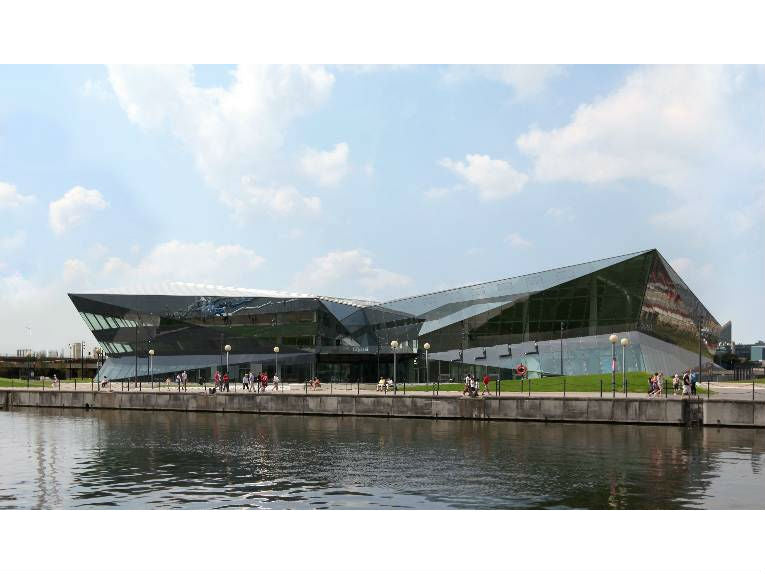The Crystal is a new eco building in London's dockland area designed by Siemens as a centre for sustainability, to promote energy efficient thinking. I went to its grand unveiling last week.
Located in Queen Victoria Dock, the Crystal finds a place among big finance and conference centres such as the O2 and ExCel, which is good news: it's about time there was positive dialogue happening in the suited community around energy efficiency.
But I call it an eco building rather than a sustainable building for a reason. I feel it's designed to 'be green' before being functional, like a Christmas tree is designed to be 'Christmassy'. I love Christmas more for the Christmas spirit than for the tinsel, for example.
Roland Busch, CEO of Siemens Infrastructure and Cities Sector: "Cities worldwide are making investments to improve their water supplies, power grids, transportation systems and building infrastructures. Our addressable market alone has a volume of €300 billion. In this growth market, the Crystal will help us intensify dialogue with our customers. The Crystal is our Sector's showcase, contact point and mastermind."
The idea of the Crystal as beacon for sustainability is a nice idea. Yes, but its persuasive power is directed at people who are not like me. It's directed at people who come from the world of business and construction and planning, people who speak this showy kind of language, and aspire to build gigantic crystals. When they're constructing a city block and want to introduce sustainable measures, now here's a big crystal built by Siemens they can use to persuade any investors who might be resistant.

Credit: © The Crystal
The buildings form is that of a faceted crystal and reminds me of the stealth ship from The World Is Not Enough. Architects responsible are Wilkinson Eyre, whose most interesting designs aesthetically are bridges, in my opinion. The Crystal cost £30m and was designed to be like a 'pavilion in a park'. But there is no park. The Crystal was built in two years which seems quite hasty to me, as if it's part of a larger timeframe rather than an end in itself.
If the reason for the Crystal's form is aesthetic then it's a poor choice because the building is not good looking and will not age well. If you don't believe me, go and take a look at it. In real life, which is where it is, it is not half as good looking as some of the pictures online. The sharp corners are very impressive though.
I'd like to believe the design is more to do with the function of solar panels or other methods but I know that's not the case. This building looks like a Bond villain's lair. Showiness is not sustainable.

Credit: © The Crystal 2012
Siemens is renowned for their intelligent technologies that run the infrastructure of cities all over the world. For example, at the Crystal opening I met a Frenchman who was there to represent the Paris transport authority RATP, which is switching its metro over to driverless Siemens tech.
When it comes to what lives and breathes under the hood, Siemens are top class. So it's no surprise and no less impressive that the Crystal is aiming for top LEED Platinum and BREAM Outstanding sustainability scores, using an array of solar PV and solar thermal panels on its roof, combined with ground source heat pumps.
Seeing as I write for The Eco Experts I'm familiar with solar technologies, and understand its advantages to a low building like the Crystal with a good share of the sky. The tallest piece of architecture in the immediate vicinity is the Emirates AirLine, also built by Wilkinson Eyre. The Docklands is becoming a more interesting place, but it's still all business.
Arup engineers built a 17km network of pipes underground and implemented a rainwater and blackwater harvesting system to make the Crystal 90% water self sufficient. It is the first commercial UK building to have a safety plan for potable water.
Its 'high performance' glazing looks like shark skin and is designed to do the job of insulation, and I'm sure it's packed with inert gases to prevent heat loss. For ventilation the building uses both natural (windows) and mechanical (heat pumps) methods.
LED lighting is used throughout the building and a very snazzy building management system makes it possible for the heat, light, ventilation and security to be controlled remotely by a single person. I imagine the nightwatchman on a beach in Thailand checking in on his iPhone.










